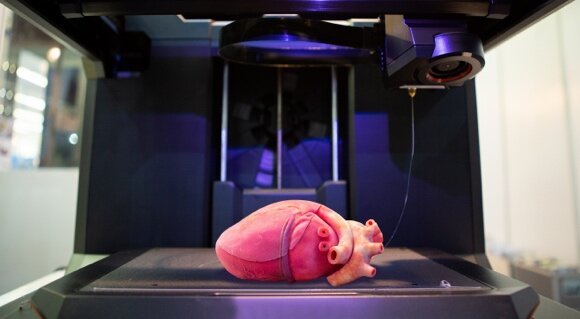5 Innovative Ideas for 3D Bio Printing In 2023

5 Innovative Ideas for 3D Bio Printing In 2023? In recent years, 3D bio-printing has emerged as a groundbreaking technology with vast potential to revolutionize the fields of medicine, biotechnology, and research. The ability to create living tissues and organs through additive manufacturing is a game-changer, offering hope for advancements in personalized medicine, drug testing, and regenerative therapies. As we step into 2023, let’s explore ten innovative ideas that are shaping the landscape of 3D bio-printing and its applications.
Contents
- 1 Organ Transplantation Advancements
- 2 Organ-on-a-Chip
- 3 Bio-Printed Skin Grafts
- 4 Personalized Medicine
- 5 Patient-Specific Drug Dosage Forms
- 6 Custom Implants and Prosthetics
- 7 Bio-Printing in Disease Modeling
- 8 Cancer Tissue Models
- 9 Neurological Disorder Models
- 10 Food Bio-Printing
- 11 Cultured Meat
- 12 Personalized Nutrition
- 13 Bioprinting in Space
- 14
- 15
- 16
- 17
- 18
- 19
- 20
- 21 Bio-Printing for Space Colonization
- 22 Cellular Agriculture in Space
- 23 Conclusion
- 24 FAQs
Organ Transplantation Advancements
Organ-on-a-Chip
Organ-on-a-Chip technology has gained traction as a promising method for testing and simulating human organs’ functionalities outside the body. 3D bio-printing allows the creation of accurate organ models, enabling drug testing and reducing the dependency on animal trials. This advancement paves the way for safer and more efficient drug development.
Bio-Printed Skin Grafts
3D bio-printing offers a potential solution to the growing demand for skin grafts in burn victims and patients with chronic wounds. By bio-printing skin using the patient’s cells, rejection risks are minimized, and the healing process can be significantly accelerated.
Personalized Medicine
Patient-Specific Drug Dosage Forms
With 3D bio-printing, it becomes feasible to create personalized drug dosage forms tailored to an individual’s needs. Customized medications enhance treatment outcomes and reduce the risk of adverse reactions.
Custom Implants and Prosthetics
Incorporating a patient’s unique anatomical data, 3D bio-printing allows the production of custom implants and prosthetics. This innovation leads to better functionality and increased comfort for patients in need of orthopedic interventions.
Bio-Printing in Disease Modeling

Cancer Tissue Models
Bio-printing cancer tissue models provides researchers with more accurate representations of tumors, facilitating drug testing and the study of cancer progression. This approach can potentially lead to better-targeted therapies and improved treatment outcomes.
Neurological Disorder Models
Researchers are exploring the possibility of using 3D bio-printing to create neural tissues that mimic the characteristics of the brain. These bio-printed models can enhance our understanding of neurological disorders and aid in the development of novel treatments.
Food Bio-Printing
Cultured Meat
3D bio-printing technology has paved the way for the development of cultured meat. By bio-printing animal cells in a controlled environment, this innovation has significant implications for sustainable and ethical food production.
Personalized Nutrition
Bio-printing can be utilized to create customized nutritional products based on an individual’s specific dietary needs and health requirements. This approach holds promise in addressing malnutrition and promoting overall well-being.
Read More: Top 10 Facts About Bail And Pretrial Release In Criminal Defense
Bioprinting in Space

Bio-Printing for Space Colonization
The use of 3D bio-printing in space exploration could revolutionize long-duration missions by enabling on-site tissue and organ fabrication. This innovation would reduce the need for extensive medical supplies from Earth.
Cellular Agriculture in Space
Bio-printing technology can be adapted to cultivate plant cells in space, leading to the production of fresh food and oxygen during extended space missions.
Conclusion
As we step into 2023, the world of 3D bio-printing is brimming with possibilities and innovations. From advancing organ transplantation to personalized medicine and disease modeling, the impact of this technology on healthcare and various industries cannot be understated. As researchers and scientists continue to push the boundaries, we can expect even more remarkable breakthroughs that will shape the future of medicine and beyond.
FAQs
What is 3D bio-printing?
3D bio-printing is a revolutionary technology that uses additive manufacturing to create living tissues and organs.
How does bio-printing benefit medicine?
Bio-printing offers advancements in organ transplantation, disease modeling, and personalized medicine.
Is 3D bio-printing environmentally friendly?
Yes, 3D bio-printing has the potential to revolutionize food production and reduce the environmental impact of traditional agriculture.
Can bio-printing be used in space exploration?
Yes, bio-printing technology can facilitate medical care and food production during extended space missions.
What are some challenges in 3D bio-printing?
Challenges include regulatory approval, scalability, and the complexity of printing certain tissues and organs.





